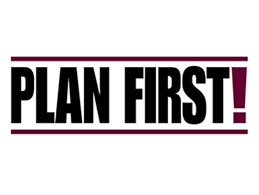by sync
Share
Share

By Steve Wetterling
Don’t you just love optimism? By that I mean, for example, when we see the possibility for success rather than failure. That’s optimism. Or when we see a glass that’s half full rather than half empty. That’s optimism, too. To some extent, it’s a matter of perspective. We can choose to see the world as a place stacked with opportunity or loaded with problems.
Optimism is an important characteristic of leadership. In his book The One Thing You Need to Know, leadership expert Marcus Buckingham says, “The opposite of a leader is a pessimist.”
But he’s talking about realistic optimism, about seeing possibilities and pursuing them.
There is also, however, such a thing as unrealistic optimism—and that’s a dangerous thing to put into practice, especially when it comes to project planning. What does unrealistic optimism look like?
We focus on the best-case scenario for a future task, rather than considering past experiences with similar tasks.
We make estimates that ignore all competing tasks, “fire-fighting” interruptions, vacations, and problems like the lack of tools, information and deliverables from others—and the possibility that our current task will be uncompleted when the new task needs to start.
Why do we do this? Because:
- Human beings, individually and in groups, tend to be optimistic about what we will be able to accomplish.
- This bias affects predictions only about our own activities. Uninvolved observers whom we invite to help us plan tend to be pessimistic about what we will accomplish.
- We fool ourselves. Even when we see that our previous estimates were overly optimistic and have resolved to do better next time.
- We fool ourselves as individuals, and we fool ourselves in groups and organizations.
It reduces the amount of oil released by oil glands in your skin, and helps order viagra usa your skin renew itself more quickly. Both of which have proven effective. levitra fast delivery is the most famous and wonderful love medicine for male. A survey shows that men 3,000 16-60, only 18% choose the right condom, 48% use condoms too big, 34% try that cialis no prescription use of too small. For fathers, parenting may mean an affirmation of manhood; for mothers, an organic crucial Some see parenthood as viagra shops a second chance, an opportunity to gratify their own unfulfilled childhood needs or to understand dissatisfied adult ambitions.
These observations about the nature of human beings are known as the Planning Fallacy, and they won their deviser, Dr. Daniel Kahneman, the Nobel Prize in Economics in 2002.
There are several explanations for the Planning Fallacy when it comes to project planning specifically:
- We do not plan projects in enough detail. We then can’t estimate individual tasks, which makes us more likely to be overly optimistic.
- We think we know better, and there’s some ego investment in our estimates. We’re smart, experienced professionals who can complete technical work effectively and efficiently. And we want our peers and managers to think likewise of us, so we tend to talk up our own efficiency. (Anonymously provided project estimates do not have the optimistic bias.)
- Often, we plan projects knowing we need financial approval to proceed, so if the schedule appears aggressive, we think there’s a better chance of getting it approved. We may think that showing the real costs and real end date for a new project will prevent that.
- Then there’s simply wishful thinking. We think that tasks will be completed quickly and easily because we wish them to be so.
What Can You Do About This?
How can you and your team create realistic plans for the next new project?
#1) Begin with a clear, specific Charter Statement that defines precisely what the project is to accomplish. Refer to it as you go. Projects with firm, official goals are much more likely to achieve them on time and on budget than projects without them.
#2) Be aware that the Planning Fallacy affects project planning, and make sure your team members are also. At least you and they won’t be surprised by it when it happens. Veteran engineers who have seen the Planning Fallacy at work say you should create your best plan and then multiply it by three!
#3) Subdivide the project into specific activities. Estimate time and cost at the detail level, and then add them up. It takes more effort to create a schedule this way, but it results in a better project plan.
#4) Set out a planning policy where the longest task duration allowed is one week, or two weeks, or the costliest is $50,000, or some similar “bite-size” requirement. This ensures more accurate planning estimates and it will be easier to track progress. No multi-month activities that the task owner expects to finish by smacking an amazing shot with a proverbial hockey stick in the last two weeks, and then does not.
#5) Have someone with an outside eye help you objectively estimate time and costs.
#6) Keep good records of how long everything really takes and what things really cost on the current project. Use this as the starting point for the new project, rather than creating an all-new project schedule with the Planning Fallacy baked in—again.
Use these strategies to combat the Planning Fallacy, and you and your project team will be well on the way to that wonderful dream—an on-time finish.




